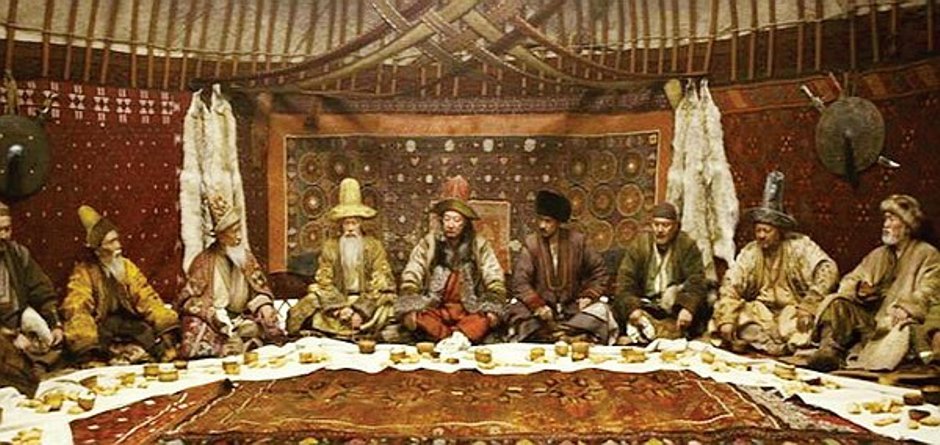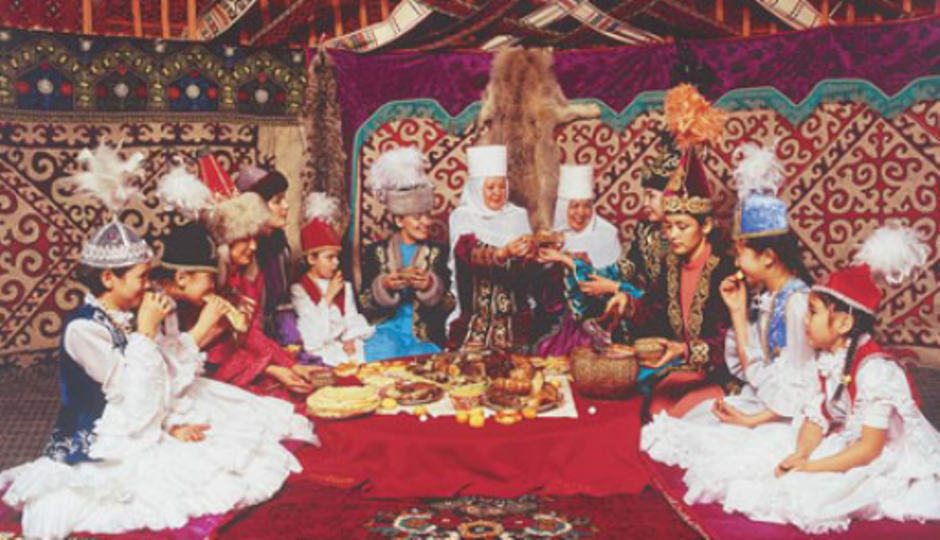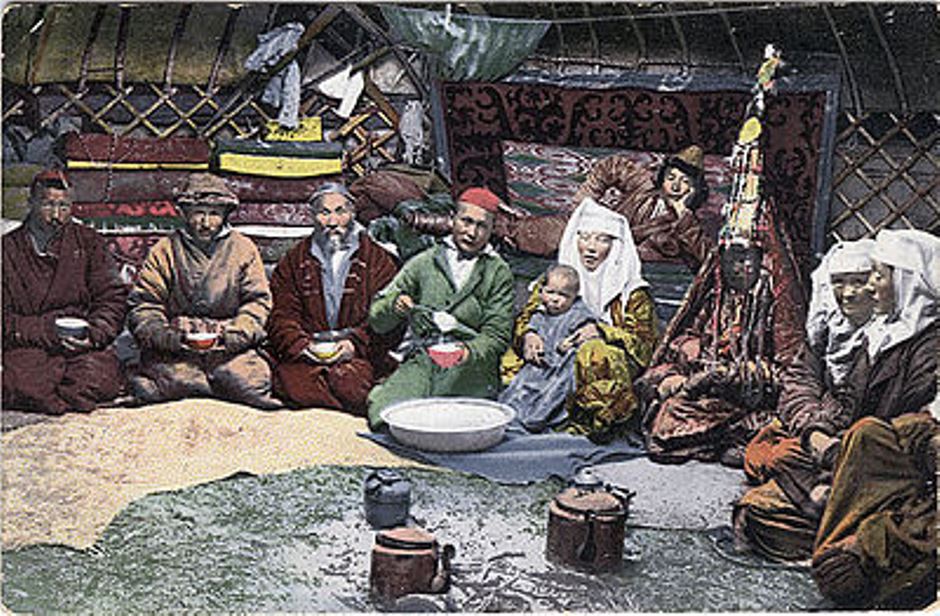
Traditional system of nourishment is exceedingly filled with cult-ritual moments. It should be noted that the Kazakh meal, both every-day, daily and festive, ritual was organized on the principle of age and gender division of participants. Such principle in meal presupposed the separate eating between men and women, children and adults. Guests formed supposedly following gender and age groups: men’s: old men-aksakals, adult men (over 20 years), young men and adolescents (from 15 to 20 years), and women’s: aged women, middle-aged and young married women, unmarried girls. In daily meals this principle was followed not particularly strictly, at festive meals the observance was mandatory.

Perhaps, the principle of organization of any meals of Kazakhs represent the existence of the institute of age classes in the past. Transition of the group members to the following stages of the system of age classes was modelled by certain rites, including meals. N. Shahanova in her work “Mir traditsionnoy kultury kazahov” (“The world of traditional Kazakh culture”) gives the following classification of Kazakh feasts: 1.Feasts, corresponding the most important rites of the infancy. The typical method of these rites was the fact they were accomplished regardless the child’s gender: shildekhana, kyrkynnan shygaru, tusau kesu. 2. Feasts, noting certain stages of socialization: customs, connected with the socialization of the men’s part of society: atka mingizu, sundet toy, zhora boza. From women’s feasts the following can be added to this category: kursak toy, kalzha, bastangy, kimeshek and belshalgysh kigizu.

Also, there are such feasts as kursak toy or korsak shashu — feast in honor of a pregnant daughter-in-law, kalzha, shildekhana — feasts devoted to a child birth; besik toy — feast devoted to the placing of an infant to the cradle; kyrkynnan shygaru — the end of first forty days; tusau kesu — in honour of first separate steps of s child; balany atka mingizu — on the occasion of the first placing of a boy on the horse; tana tagar — on the occasion of the presenting the pearl metal plate to a child; sundet toy — feast on the occasion of Muslim circumcision; tokym kagar — in honor of the first sending of a young person to a distant way, not huge ritual feasts dedicated to the putting on the first kimeshek (change of wedding headwear “saukele” by the headwear of a married woman) by a young woman and first wearing of the belshalgyn — unsewn in front skirt by a middle-aged woman. Among the given meals the wedding feast of Kazakhs, more accurately, the complex of feasts was included into wedding ceremonial.
It is just a minor part of all meals connected with the Kazakh rites. Major part of them is preserved to this day, which reflects the stability of the perception about their necessity.
By Miras NURLANULY
